Related Research Articles

Henry III, also known as Henry of Winchester, was King of England, Lord of Ireland, and Duke of Aquitaine from 1216 until his death in 1272. The son of King John and Isabella of Angoulême, Henry assumed the throne when he was only nine in the middle of the First Barons' War. Cardinal Guala Bicchieri declared the war against the rebel barons to be a religious crusade and Henry's forces, led by William Marshal, defeated the rebels at the battles of Lincoln and Sandwich in 1217. Henry promised to abide by Great Charter of 1225, a later version of the 1215 Magna Carta, which limited royal power and protected the rights of the major barons. His early rule was dominated first by Hubert de Burgh and then Peter des Roches, who re-established royal authority after the war. In 1230, the King attempted to reconquer the provinces of France that had once belonged to his father, but the invasion was a debacle. A revolt led by William Marshal's son Richard broke out in 1232, ending in a peace settlement negotiated by the Church.
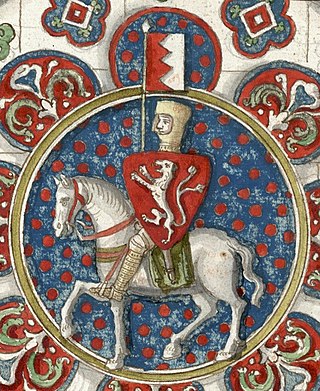
Simon de Montfort, 6th Earl of Leicester, later sometimes referred to as Simon V de Montfort to distinguish him from his namesake relatives, was an English nobleman of French origin and a member of the English peerage, who led the baronial opposition to the rule of King Henry III of England, culminating in the Second Barons' War. Following his initial victories over royal forces, he became de facto ruler of the country, and played a major role in the constitutional development of England.

Isabella was Queen of England from 1200 to 1216 as the second wife of King John, Countess of Angoulême in her own right from 1202 until her death in 1246, and Countess of La Marche from 1220 to 1246 as the wife of Count Hugh.
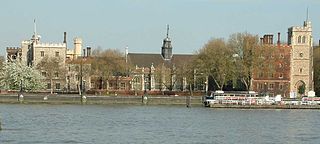
Boniface of Savoy was a medieval Bishop of Belley in Savoy and Archbishop of Canterbury in England. He was the son of Thomas, Count of Savoy and owed his initial ecclesiastical posts to his father. Other members of his family were also clergymen, and a brother succeeded his father as count. One niece Eleanor of Provence was married to King Henry III of England, and another was married to King Louis IX of France. It was Henry who secured Boniface's election as Archbishop, and throughout his tenure of that office, he spent much time on the continent. He clashed with his bishops, with his nephew-by-marriage, and with the papacy but managed to eliminate the archiepiscopal debt that he had inherited on taking office. During Simon de Montfort's struggle with King Henry, Boniface initially helped Montfort's cause but later supported the king. After his death in Savoy, his tomb became the object of a cult, and he was eventually beatified in 1839.
Peter II, called the Little Charlemagne, was Count of Savoy from 1263 until his death in 1268. He was also holder of the Honour of Richmond, Yorkshire, England, the Honour of the Eagle also known as the Honour of Pevensey and the Honour of Eu also known as the Honour of Hastings. His significant land holdings in Sussex were also marked by his holding of the wardship of John de Warenne, 6th Earl of Surrey which brought with it lands centred upon Lewes castle. Briefly, from 1241 until 1242, castellan of Dover Castle and Keeper of the Coast. In 1243 he was granted land by the Thames in London where he later built the Savoy Palace.

Amadeus V, also known as Amadeus the Great, was the Count of Savoy from 1285 until his death in 1323. He was a significant medieval ruler who played a crucial role in the expansion and consolidation of the House of Savoy’s influence in the regions that are now part of modern-day France, Italy, and Switzerland.
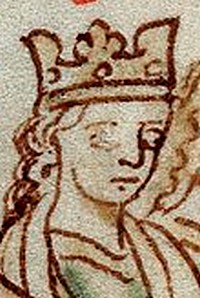
Eleanor of Provence was a Provençal noblewoman who became Queen of England as the wife of King Henry III from 1236 until his death in 1272. She served as regent of England during the absence of her spouse in France in 1253.
Edmund, 1st Earl of Lancaster, also known as Edmund Crouchback, was a member of the royal Plantagenet Dynasty and the founder of the first House of Lancaster. He was Earl of Leicester (1265–1296), Lancaster (1267–1296) and Derby (1269–1296) in England and Count Palatine of Champagne (1276–1284) in France.
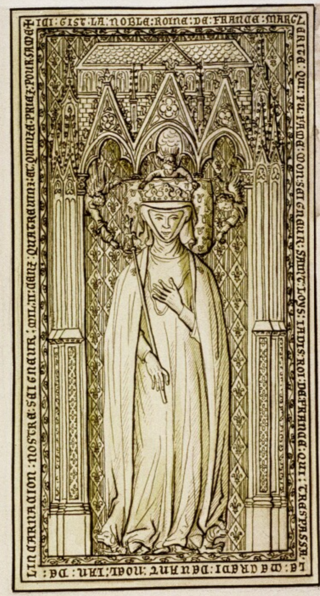
Margaret of Provence was Queen of France by marriage to King Louis IX.
Simon de Montfort's Parliament was an English parliament held from 20 January 1265 until mid-March of the same year, called by Simon de Montfort, a baronial rebel leader.
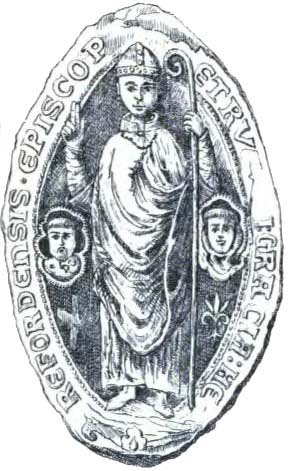
Peter of Aigueblanche was a medieval Bishop of Hereford. A nobleman from Savoy, he came to England as part of the party accompanying King Henry III's bride Eleanor of Provence. He entered the royal service, becoming bishop in 1241. He then served the king for a number of years as a diplomat, helping to arrange the marriage of Prince Edward. Peter became embroiled in King Henry's attempts to acquire the kingdom of Sicily, and Peter's efforts to raise money towards that goal brought condemnation from the clergy and barons of England. When the barons began to revolt against King Henry in the late 1250s and early 1260s, Peter was attacked and his lands and property pillaged. He was arrested briefly in 1263 by the barons, before being mostly restored to his lands after the Battle of Evesham.
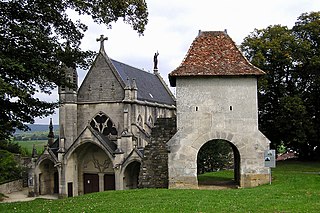
Vaucouleurs is a commune in the Meuse department, northeastern France. It is situated on the river Meuse, approximately 20 km (12 mi) from Toul and Commercy.

Beatrice of England was a member of the House of Plantagenet, the daughter of Henry III of England and Eleanor of Provence.
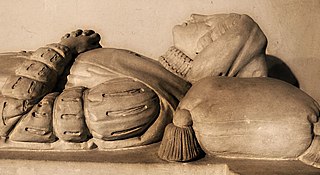
Beatrice of Savoy was Countess consort of Provence by her marriage to Ramon Berenguer IV, Count of Provence. She served as regent of her birth country Savoy during the absence of her brother in 1264.
Events from the 1230s in England.
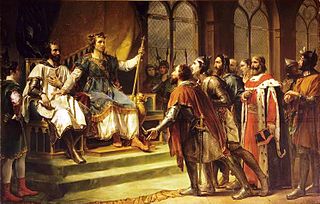
The Mise of Amiens was a settlement given by King Louis IX of France on 23 January 1264 in the conflict between King Henry III of England and his rebellious barons, led by Simon de Montfort. Louis' one-sided decision for King Henry led directly to the hostilities of the Second Barons' War.
Edmund de Lacy, Earl of Lincoln (c.1230–1258) was an important landholder in Northern England, with a strategic manor at Stanbury which was important for east–west communication, and as Lord of the Honour of Pontefract he possessed Pontefract Castle.

Geoffrey de Geneville, 1st Baron Geneville also known as Geoffrey de Joinville and Geoffroi de Joinville, was an Anglo-French noble, supporter of Henry III, who appointed him Baron of Trim, County Meath, and, subsequently, a staunch supporter of Edward I.

Hugh de Vivonne was a French knight from Vivonne in the County of Poitou. He was loyal to the Plantagenet family and supported their right to vast lands in France. From 1215 onward he made his home in England, where he was constable of Bristol Castle and later High Sheriff of Somerset and Dorset (1241–49). He married an English lady and became lord of Chewton and Curry Mallet. He received further English estates in compensation for the loss of his lands in France. Yet, as a foreign soldier in the king's pay, he has been described as merely a "Poitevin mercenary captain".

Peter of Geneva or Pierre de Genève was the son of Humbert, Count of Geneva, and grandson of William I.
References
- ↑ Howell 2001 , pp. 4–7, 11–12
- ↑ Ridgeway 1988, pp. 81, 84.
- 1 2 Jobson 2012, p. 8.
- ↑ Cox 1974, p. 50.
- ↑ Howell 2004.
- ↑ Arnold-Baker 2015, p. 1116.
- ↑ Ridgeway 1988 , p. 81
- ↑ Ridgeway 1989, p. 591.
- ↑ Jobson 2012 , p. 8
- ↑ Jobson 2012, pp. 18–19.
- ↑ Howell 2001, p. 153.
- ↑ Costain 1959, pp. 130–140.
- ↑ Carpenter 2004, p. 342.
- ↑ Jobson 2012, p. 77.